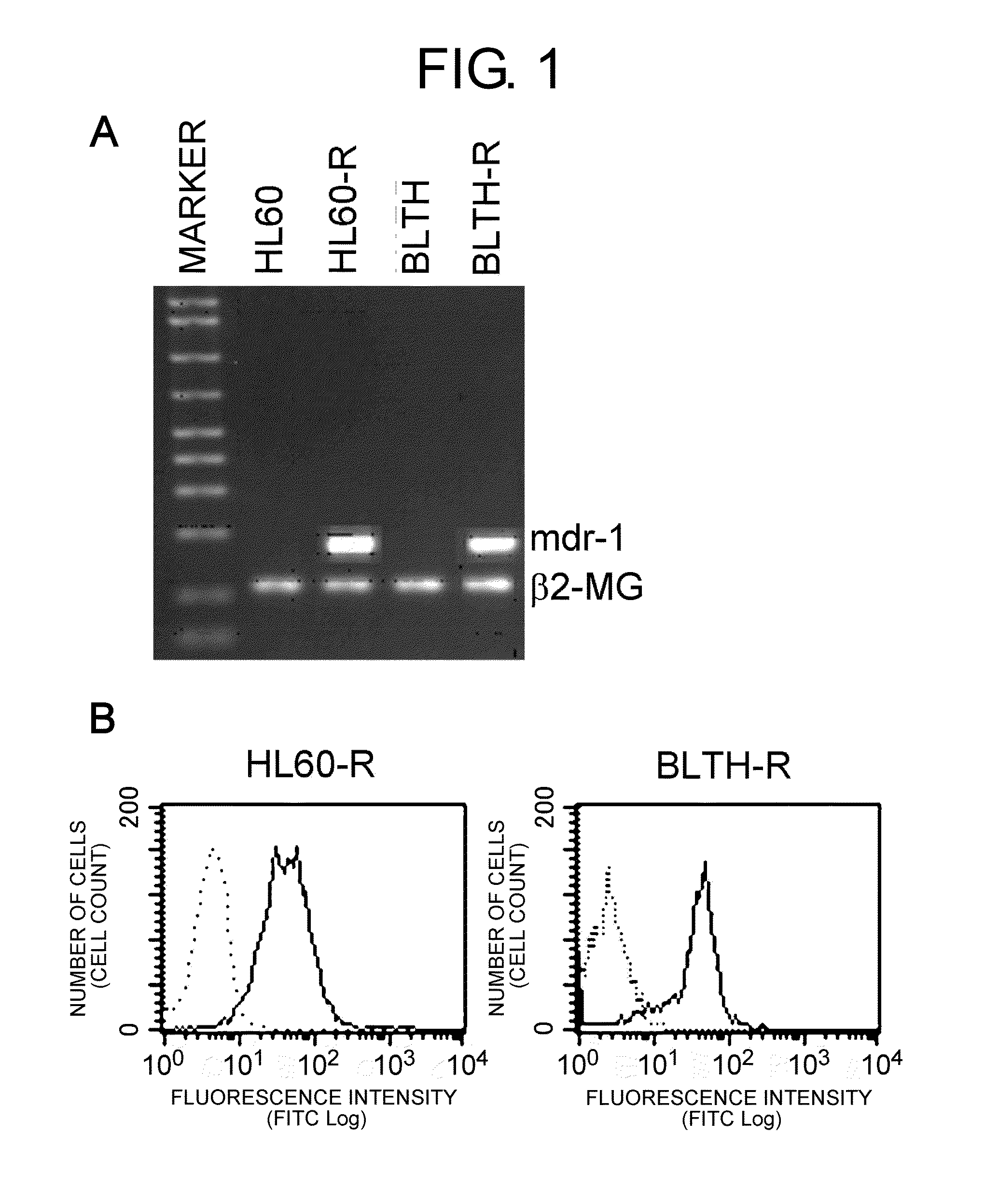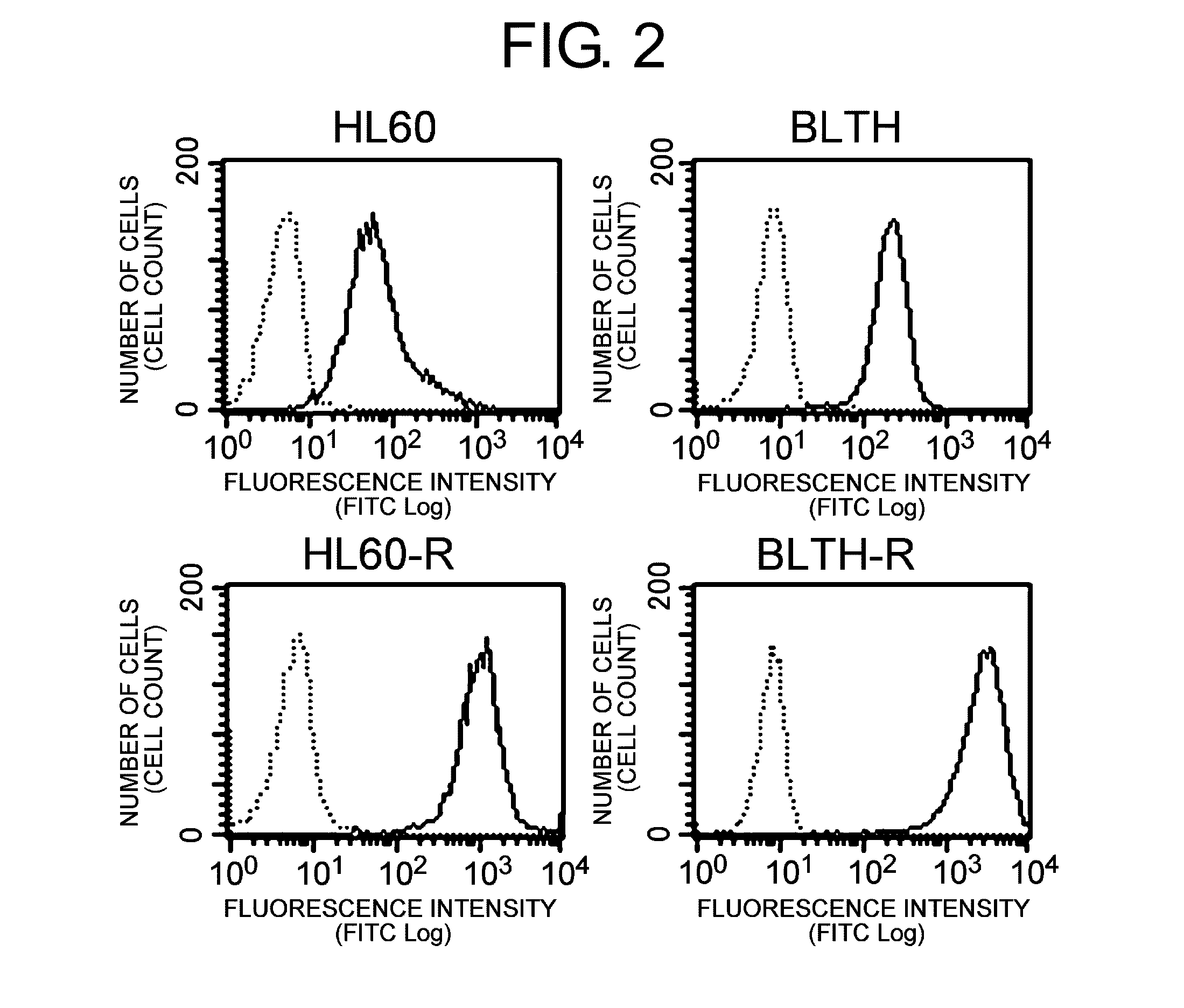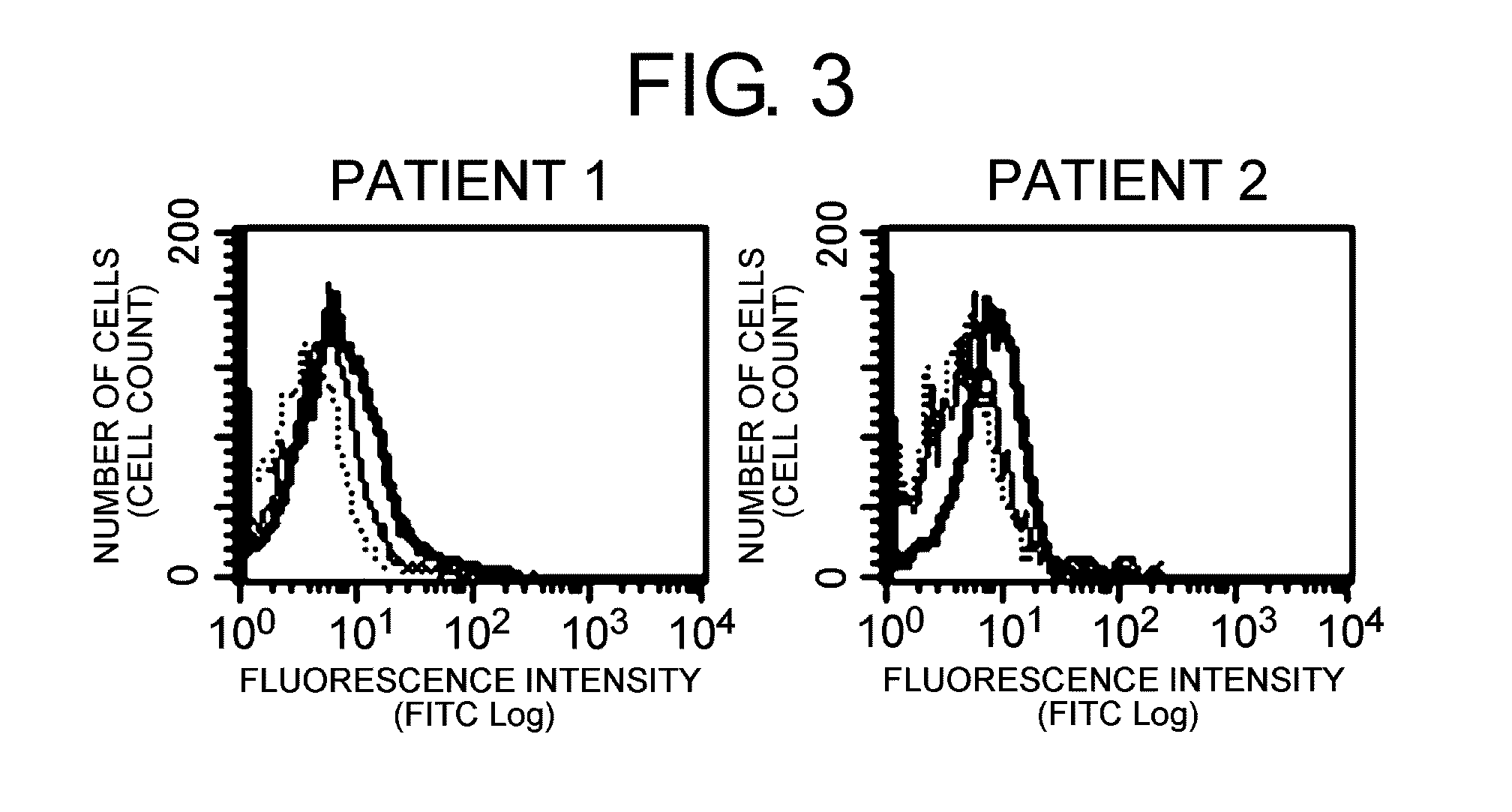Remedy For Chemotherapy-Resistant Cancer Containing HLA Class I-Recognizing Antibody as the Active Ingredient and Use of the Same
- Summary
- Abstract
- Description
- Claims
- Application Information
AI Technical Summary
Benefits of technology
Problems solved by technology
Method used
Image
Examples
example 1
Establishment of Chemotherapeutic Agent (Vincristine)-Resistant Hematological Tumor Cell Lines
[0154]Acute myeloid leukemia cell line HL60 (American Type Culture Collection, Manassas, Va., USA) and Burkitt's lymphoma cell line BLTH (kindly gifted from Prof Hirose at The University of Tokushima, Br. J. Cancer (1987) 56: 413-417) were cultured in the presence of vincristine to obtain vincristine-resistant cell lines HL60-R and BLTH-R.
example 2
Confirmation of mdr1 mRNA and the Amount of HLA Class I Expression in Tumor Cell Lines
[0155]First, mdr1 mRNA expression in HL60, HL60-R, BLTH, and BLTH-R was confirmed by RT-PCR, and the expression of the HLA class I protein and the MDR1 protein on the cell surface were confirmed by flow cytometry.
[0156]mdr1 mRNA expression in these cells were examined by RT-PCR using specific primers (5′-CCC ATC ATT GCAATA GCA GG (SEQ ID NO: 13) and 3′-GTT CAA ACT TCT GCT CCT GA (SEQ ID NO: 14)). As a control, expression of β2-microglobulin mRNA expression was examined using specific primers (5′-ACC CCC ACT GAA AAA GAT GA (SEQ ID NO: 15) and 3′-ATC TTC AAA CCT CCA TGA TG (SEQ ID NO: 16)).
[0157]MDR1 expression on the cell surface was examined by flow cytometry using anti-MDR1 antibody (UIC-2, Chemicon, Temecula, Calif., USA) and FITC-labeled goat anti-mouse IgG antibody (Biosource, Camarillo, Calif., USA). Mouse IgG (BD Biosciences, San Jose, Calif., USA) was used for the control antibody.
[0158]As a...
example 3
Cytotoxic Activity of C3B3-DB in Tumor Cell Lines
[0161]First, these tumor cells were used to examine their susceptibility to C3B3-DB. These tumor cells were cultured in the presence of various concentrations of C3B3-DB and then antitumor activity (cytotoxic activity) of C3B3-DB was measured by cell growth tests using WST-8 (Kishida Chemicals, Osaka).
[0162]Culturing these cells for 24 hours in the presence of C3B3-DB and comparing the survival rate of the cells demonstrated that cell injury was induced at lower concentrations of C3B3-DB in the vincristine-resistant cell lines, HL60-R and BLTH-R (FIG. 5).
[0163]In addition, whether or not drug resistance in chemotherapeutic agent-resistant tumor cells can be overcome (improved) was examined by culturing these cells in the presence or absence of C3B3-DB (0.1 μg / mL) for six hours and then adding vincristine. In the parent cell lines, HL60 and BLTH, concentration-dependent cell injury by vincristine was induced regardless of whether or no...
PUM
| Property | Measurement | Unit |
|---|---|---|
| Weight | aaaaa | aaaaa |
| Electrical resistance | aaaaa | aaaaa |
| Chemotherapeutic properties | aaaaa | aaaaa |
Abstract
Description
Claims
Application Information
 Login to View More
Login to View More - R&D
- Intellectual Property
- Life Sciences
- Materials
- Tech Scout
- Unparalleled Data Quality
- Higher Quality Content
- 60% Fewer Hallucinations
Browse by: Latest US Patents, China's latest patents, Technical Efficacy Thesaurus, Application Domain, Technology Topic, Popular Technical Reports.
© 2025 PatSnap. All rights reserved.Legal|Privacy policy|Modern Slavery Act Transparency Statement|Sitemap|About US| Contact US: help@patsnap.com



